Effective Builders Waste Clearance in Junk Removal Waste Management
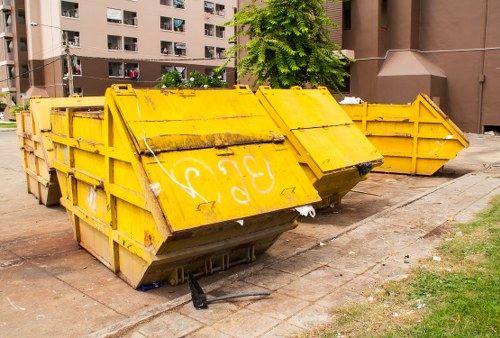
In the construction industry, managing builders waste clearance is a critical task. Efficient waste removal not only ensures a cleaner worksite but also contributes to environmental sustainability. Proper disposal and recycling of construction debris can significantly reduce the ecological footprint of building projects.
Builders waste includes a variety of materials such as concrete, wood, metals, and plastics. Each of these materials requires specific handling and disposal methods to comply with local regulations and environmental standards.
Engaging with professional junk removal services ensures that waste is managed responsibly. These services offer comprehensive solutions, from collection and transportation to recycling and disposal, tailored to meet the unique needs of construction projects.
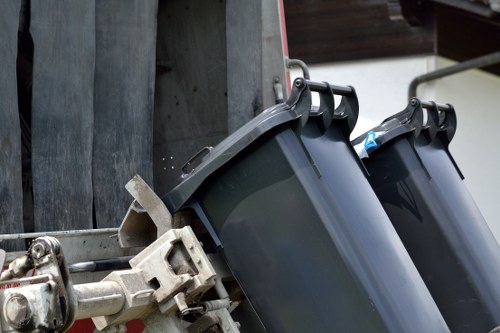
The Importance of Builders Waste Clearance
Effective waste clearance is essential for several reasons:
- Safety: Removing debris reduces the risk of accidents on construction sites.
- Compliance: Adhering to waste management regulations prevents legal issues and potential fines.
- Environmental Impact: Proper disposal minimizes environmental pollution and promotes recycling.
Moreover, maintaining a clutter-free site enhances productivity and workflow efficiency, allowing construction activities to proceed smoothly.
Investing in professional junk removal services can provide peace of mind, knowing that waste is being handled in an environmentally responsible manner.
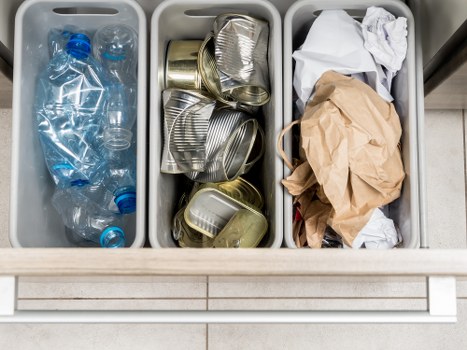
Steps Involved in Builders Waste Clearance
Effective builders waste clearance involves several key steps:
- Assessment: Evaluating the type and volume of waste generated.
- Segregation: Separating recyclable materials from non-recyclable ones.
- Collection: Gathering the segregated waste for transportation.
- Transportation: Moving waste to appropriate disposal or recycling facilities.
- Disposal: Ensuring that waste is disposed of in compliance with environmental standards.
Each step requires careful planning and execution to ensure efficiency and compliance.
Professional junk removal services are equipped to handle each stage effectively, ensuring minimal disruption to the construction schedule.
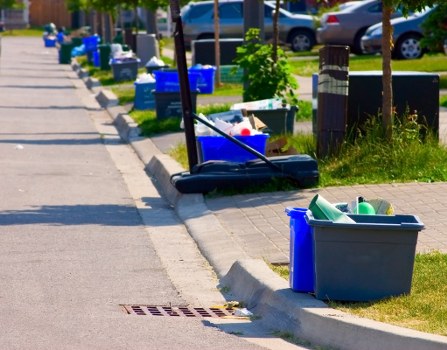
Types of Waste Managed in Builders Waste Clearance
Builders waste clearance encompasses various types of waste, including:
- Concrete and Masonry: Often recycled for use in new construction projects.
- Wood: Can be repurposed or processed for biomass energy.
- Metals: Highly recyclable, conserving natural resources.
- Plastics: Requires specialized handling to prevent environmental contamination.
- Glass: Recycled to reduce the need for raw materials.
Proper handling of each waste type ensures maximum recycling and minimal landfill usage.
Understanding the categories of waste helps in planning effective disposal strategies.
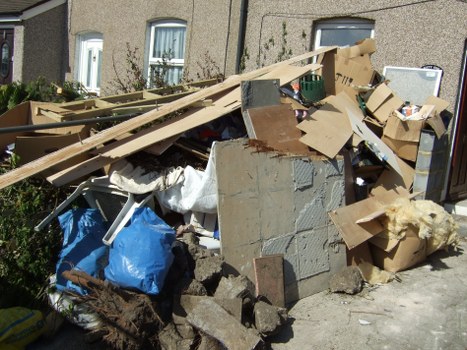
Benefits of Professional Junk Removal Services
Hiring professional junk removal services for builders waste clearance offers numerous benefits:
- Efficiency: Faster waste removal compared to in-house efforts.
- Expertise: Knowledge of proper disposal methods and recycling options.
- Compliance: Ensures adherence to local and national waste management regulations.
- Cost-Effective: Reduces the costs associated with managing and disposing of waste internally.
- Environmental Responsibility: Promotes sustainable practices through effective recycling and disposal.
These benefits contribute to smoother construction operations and a positive environmental impact.
Choosing the right junk removal partner is crucial for maximizing these advantages.
Choosing the Right Builders Waste Clearance Service

Selecting a reliable waste clearance service involves evaluating several factors:
- Reputation: Look for companies with positive reviews and a history of reliable service.
- Licensing and Certification: Ensure the company is authorized to handle and dispose of construction waste.
- Service Range: Determine if the service covers the types of waste you need to manage.
- Pricing: Compare costs to ensure you receive value for money without compromising quality.
- Sustainability Practices: Opt for services that prioritize recycling and environmentally friendly disposal methods.
Taking the time to assess these aspects will help you choose a service that aligns with your project’s needs and sustainability goals.
Don’t hesitate to request quotes and ask questions to make an informed decision.
Implementing Effective Waste Management Strategies

To ensure efficient waste clearance, implement the following strategies:
- Planning: Incorporate waste management into the project plan from the outset.
- Segregation: Separate different types of waste at the source to streamline disposal.
- Regular Collection: Schedule frequent waste pickups to prevent accumulation.
- Recycling: Partner with recycling facilities to process reusable materials.
- Training: Educate staff on proper waste handling and disposal practices.
These strategies contribute to a more organized and sustainable construction process.
Effective waste management can also enhance your project’s reputation and sustainability credentials.
Environmental Impact of Builders Waste Clearance

Proper waste clearance plays a significant role in reducing the environmental impact of construction projects:
- Resource Conservation: Recycling materials reduces the need for raw resource extraction.
- Energy Savings: Manufacturing with recycled materials typically consumes less energy.
- Pollution Reduction: Minimizes the release of harmful substances into the environment.
- Landfill Space: Decreases the amount of waste sent to landfills, prolonging their lifespan.
- Carbon Footprint: Lower waste generation contributes to reduced greenhouse gas emissions.
By prioritizing sustainable waste clearance practices, builders can contribute positively to environmental conservation efforts.
Adopting green waste management practices is not only beneficial for the environment but also aligns with increasingly stringent regulatory requirements.
Innovations in Junk Removal for Builders Waste

The junk removal industry is evolving with new technologies and methodologies to enhance waste clearance efficiency:
- Advanced Sorting Technologies: Improving the accuracy and speed of waste segregation.
- Automation: Utilizing machinery to handle heavy and bulky waste items.
- Digital Tracking: Implementing software to monitor waste collection and disposal processes.
- Eco-Friendly Vehicles: Reducing emissions with electric or hybrid waste transport vehicles.
- Recycling Innovations: Developing new methods to recycle previously non-recyclable materials.
These innovations lead to more sustainable and cost-effective waste management solutions.
Staying updated with the latest advancements can provide a competitive edge in the junk removal industry.
Cost Considerations in Builders Waste Clearance

Understanding the cost factors involved in waste clearance helps in budgeting and financial planning for construction projects:
- Volume of Waste: Larger projects generate more waste, increasing disposal costs.
- Type of Waste: Hazardous or non-recyclable materials may incur higher fees.
- Frequency of Removal: Regular pickups can be more cost-effective than ad-hoc services.
- Location: Accessibility and distance to disposal facilities can impact pricing.
- Service Provider: Rates vary based on the reputation and range of services offered.
It's essential to obtain detailed quotes and understand the pricing structure before committing to a service.
Transparent communication with service providers can help avoid unexpected costs and ensure value for money.
Regulatory Compliance in Waste Clearance

Compliance with local and national regulations is paramount in waste clearance. Failure to adhere can result in legal penalties and environmental damage.
- Licensing: Ensure that the waste removal service is licensed to operate in your area.
- Permits: Obtain necessary permits for transporting and disposing of certain types of waste.
- Documentation: Maintain records of waste disposal for regulatory audits and inspections.
- Environmental Standards: Follow guidelines for handling hazardous and non-hazardous waste.
- Reporting: Submit required reports to environmental agencies as mandated.
Staying informed about regulatory changes helps in maintaining compliance and avoiding disruptions.
Collaborate with knowledgeable waste removal professionals to navigate complex regulatory landscapes effectively.
Future Trends in Builders Waste Clearance

The future of waste clearance in the construction industry is shaped by several emerging trends:
- Circular Economy: Emphasizing reuse and recycling to create a closed-loop system.
- Smart Waste Management: Utilizing IoT and data analytics for optimized waste collection and processing.
- Green Building Certifications: Increasing demand for sustainable waste management practices as part of certifications like LEED.
- Consumer Awareness: Growing public concern about environmental impacts pushing for better waste clearance solutions.
- Technological Integration: Incorporating AI and automation to enhance efficiency in waste handling.
Embracing these trends can lead to more sustainable and efficient waste management practices in the construction sector.
Adapting to future developments ensures that builders and waste removal services remain competitive and compliant.
Implementing Sustainable Waste Practices

Adopting sustainable waste clearance practices benefits both the environment and the construction business:
- Recycling Programs: Establish systems to sort and recycle materials effectively.
- Waste Reduction: Implement strategies to minimize waste generation from the start.
- Eco-Friendly Materials: Use materials that are easier to recycle or have a lower environmental impact.
- Energy Efficiency: Optimize waste processing to consume less energy.
- Community Engagement: Involve local communities in recycling and waste reduction initiatives.
These practices contribute to a more sustainable construction lifecycle and foster a positive environmental legacy.
Continuous improvement and innovation in waste management can lead to long-term benefits and cost savings.
Conclusion
Efficient builders waste clearance is a vital component of successful construction projects. By partnering with professional junk removal services, adhering to regulatory standards, and embracing sustainable practices, builders can manage waste effectively, ensuring safety, compliance, and environmental responsibility.
Investing in proper waste management not only enhances operational efficiency but also contributes to a greener, more sustainable future. Contact us today to learn how we can assist with your builders waste clearance needs and help streamline your construction projects.



